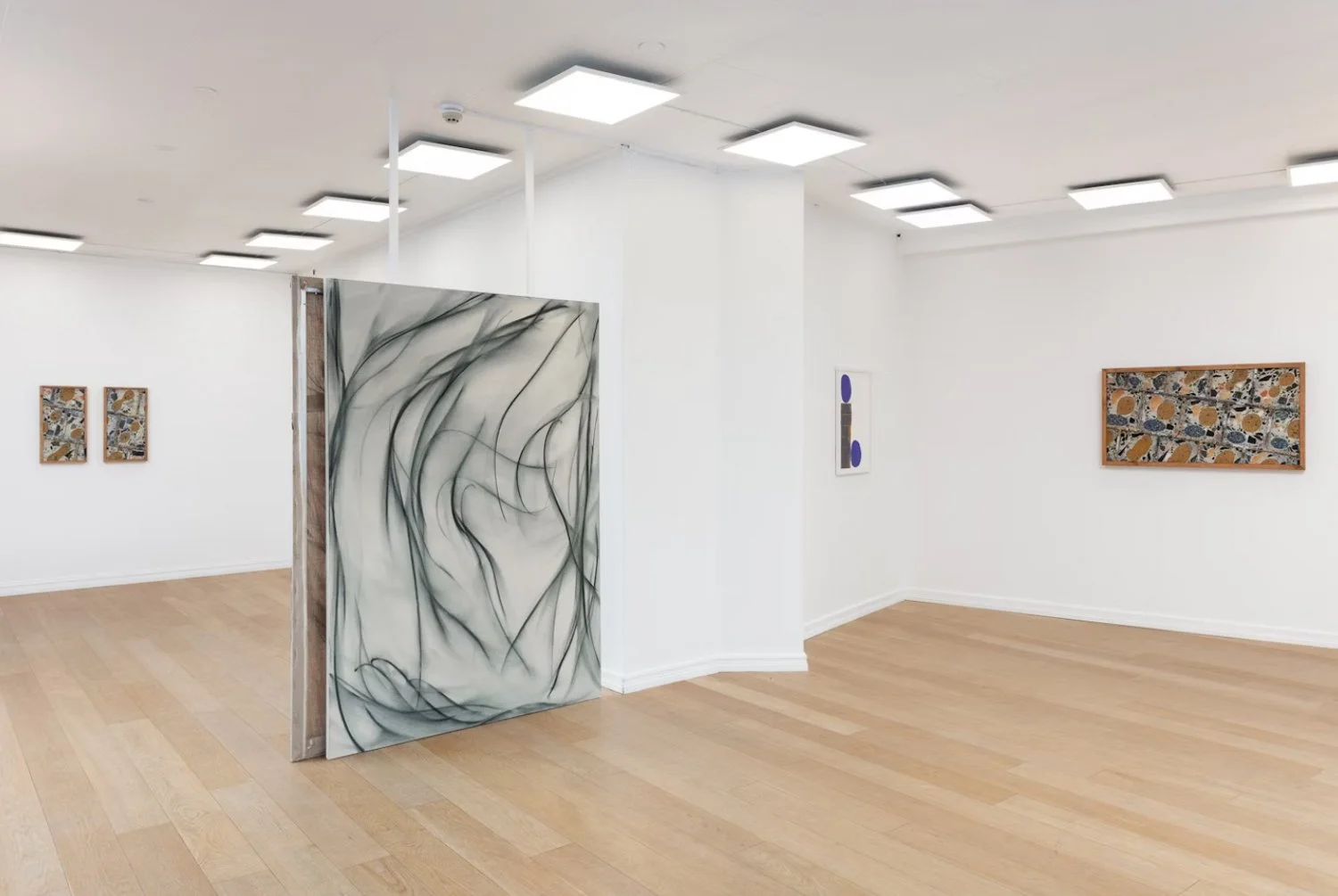Sverre Gullesen / Gerd Tinglum / Alina Vergnano
The show ‘Fragments of the past, shadows of the future’ feature works by Sverre Gullesen, Gerd Tinglum and Alina Vergnano. In the meeting between Vergano’s large canvas and dynamic strokes, Tinglum’s series of grids consisting of circles and color fields and Gullesen’s organic forms locked in concrete, we are invited into a dialogue between the controlled and the uncontrolled, what has been, what is, and what may come.
Tinglum’s series ‘Om Arv’ (About Heritage) has an immediate visual character where the use of bright colors, circles and square color fields gives associations to games, various diagrams and systems. Our gaze wanders between the different combinations. In the space between what is experienced as constant and what is experienced as variables, we begin to search for a system, and in the system for meaning. The title ‘Om Arv’ gives us a hint of what this underlying matter might be. Here, the infinite visual variations of heritage that we are all living examples of, or the often more invisible heritage that we carry with us and pass on, are explored. The paths our thoughts can take are long and many, and the experience of the works is transformed from the immediate and purely visual to a search in- and between the forms, in a possible complex biological as well as emotionally charged matter.
In the encounter with Vergano’s large canvases and dynamic strokes, we are pulled out of our thoughts and placed into the body. The strokes almost undulate through us and draw us into a flow, into the movement itself. We feel the stroke within us and we recognize it; in the shapes and movements of our own body, but also in the concrete dust of the construction site that forms the most beautiful visual dance when it is lifted up and played with by the wind, we recognize it in the water that we see trickling under the ice in spring, in the water that violently breaks through a dam, we recognize it in the flame of the candle that flickers on the dinner table when the window is opened, in schools of fish on the seabed, flocks of birds in the sky, in the child's hair that waves in the bathtub water. There is something poetic and at the same time brutal in how the lines in Vergano’s works arise and disappear, how the strength varies between the resolutely powerful and the lightly flowing, how the strokes seemingly with the greatest naturalness in the world dare to accommodate everything and nothing.
With their organic forms locked in concrete, Gullesen’s wall works exist in the landscape between the historical and brutal, but also the poetic and natural. In the surface of the works, the eye plays in the organic forms, colors and the various fragments that come to light, while one can almost feel how cold and smooth the same surface would feel under our fingertips, we can feel the weight of the stone, of concrete, in the body. Each individual square that together makes up Gullesen’s wall sculptures is a cross-section of natural elements such as pieces of stone and slag cast together with concrete in tight frames. The smooth surface with varying organic forms gives associations to biological cross-sections that are placed under the researcher’s microscope. Several stories are cemented together here; the stone as a cut-off from other projects, but also the history of concrete, from its origin as stone but also how it has been used as a building material in architectural history and the Norwegian post-war period. In these buildings, as well as in Gullesen’s work, one can find the beauty in the gray, the sober, in the stone. Thoughts go to how stone and rock have been a part of how people have sought shelter since the dawn of time.


